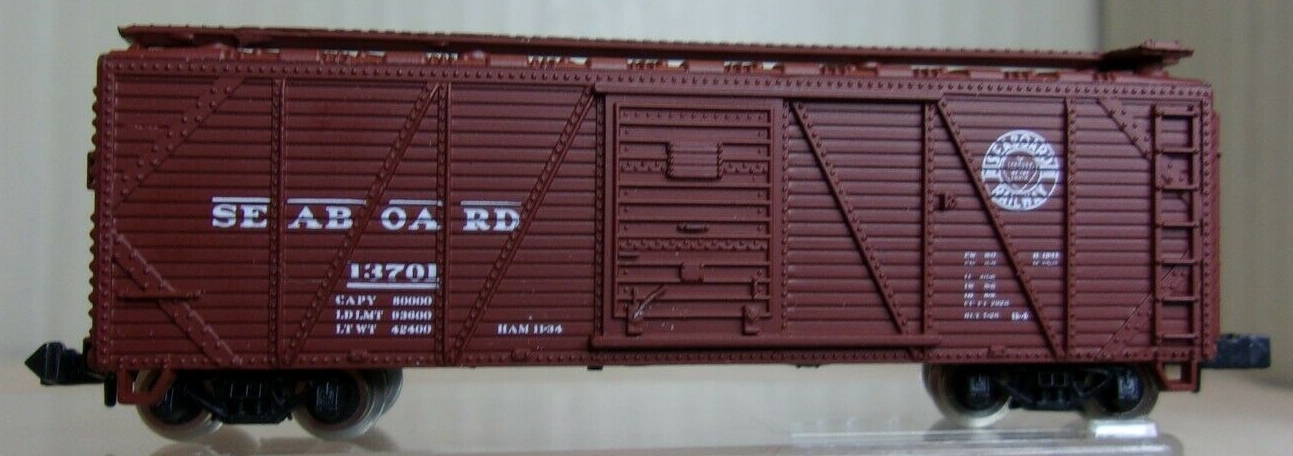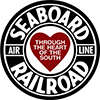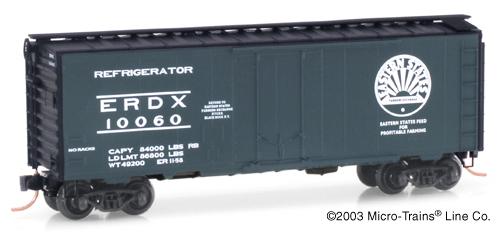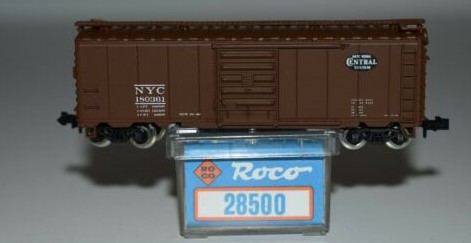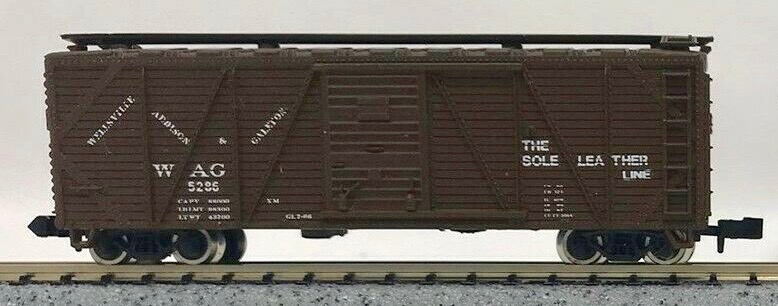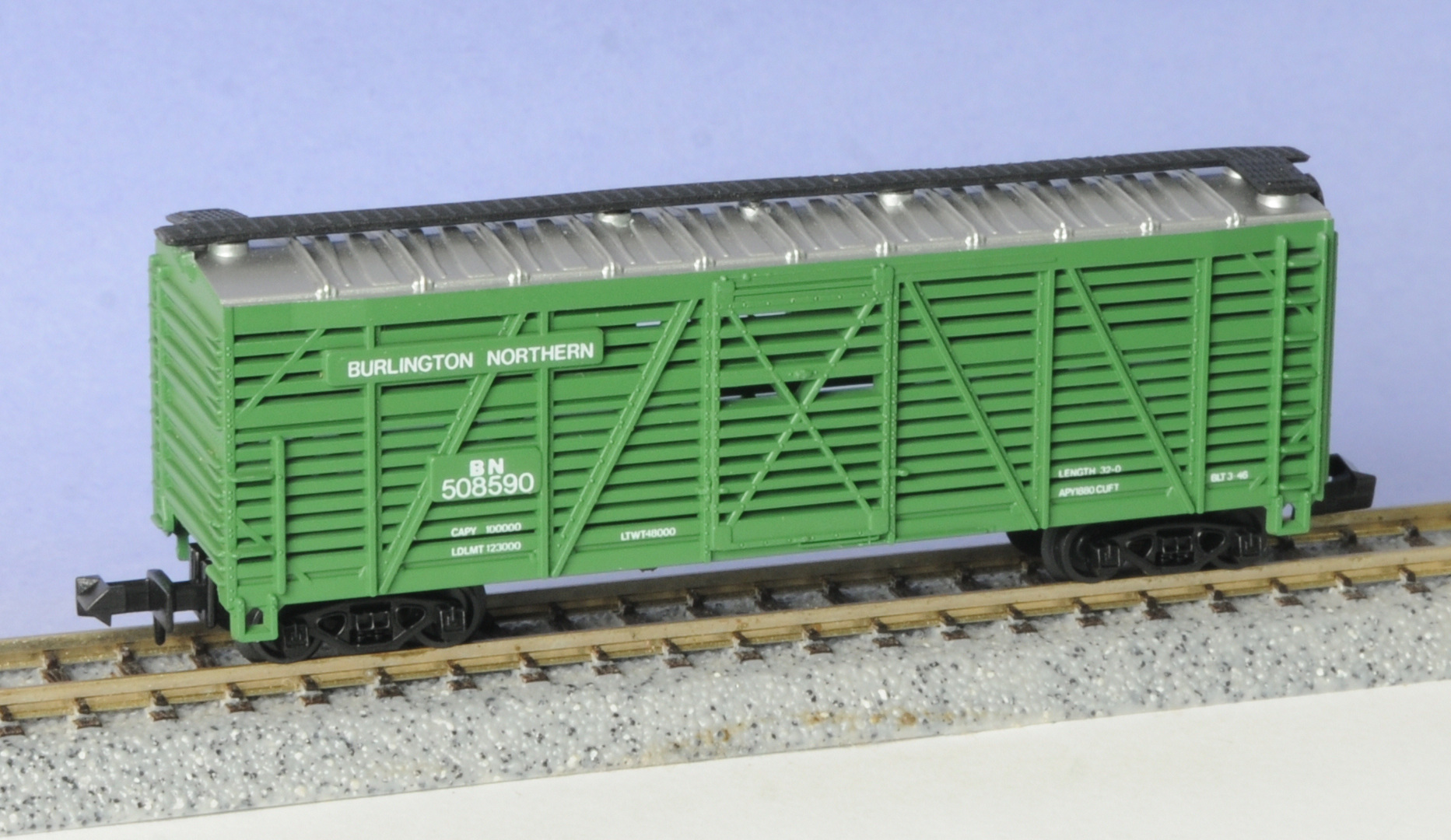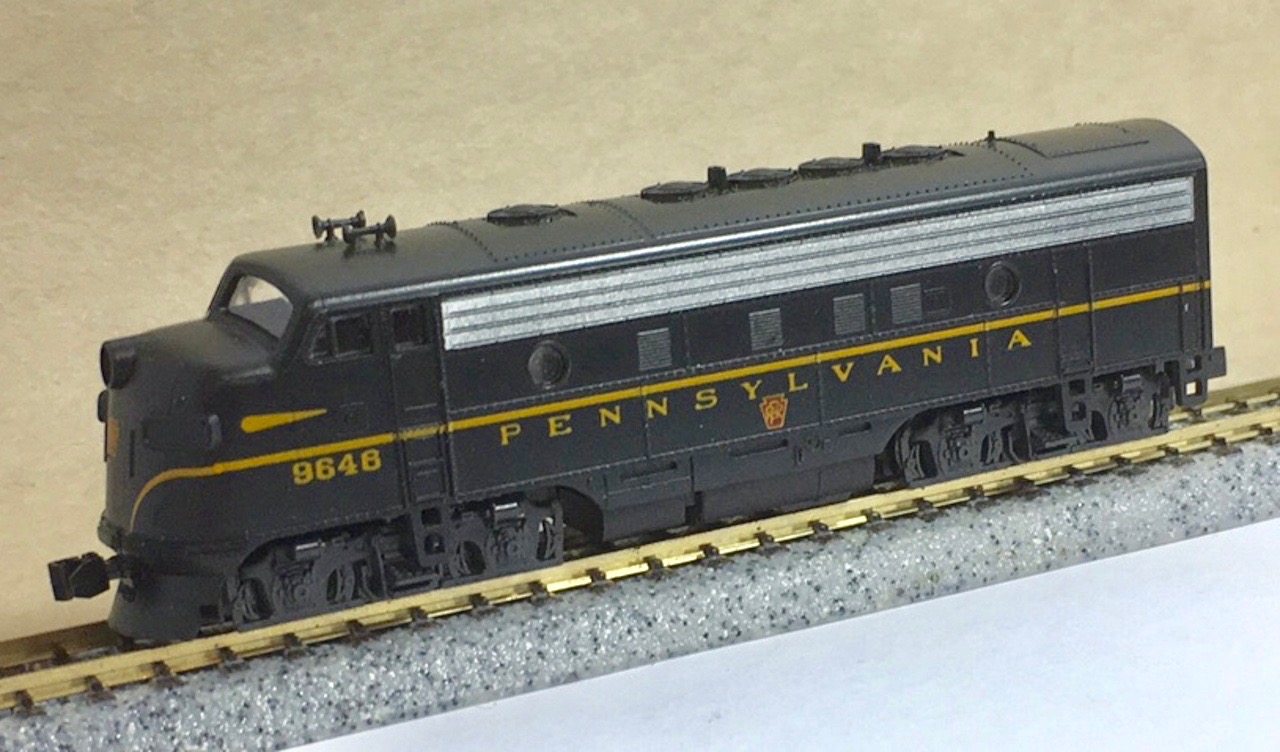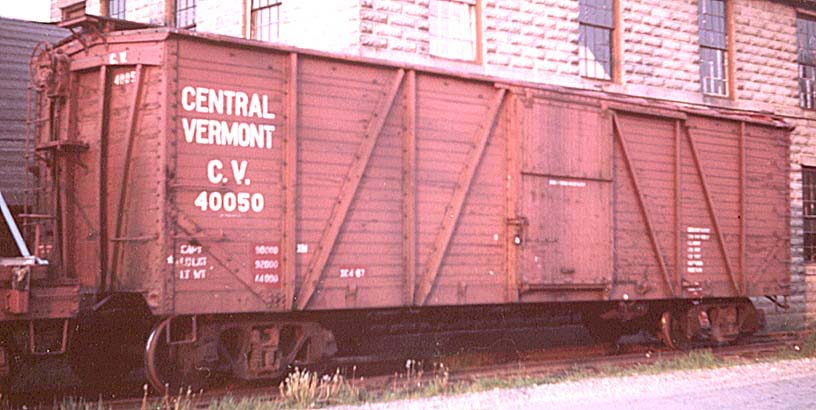Specific Item Information: This version was produced from a different mold than earlier versions of this car produced by Mehano and Roco for AHM an Model Power prior to 1990. Walthers imported this version from Roco and sold it under that brand in the 1993 Catalog for $4.98. This version is much cleaner and clearer in detail than the earlier versions. The older Seaboard car did not have the herald on the right side of the door.
Model Information: The boxcars were first produced by Roco for Aurora's Postage Stamp line of N Scale Trains. They have also been imported by Model Power until the early 1980's. They were later imported using Roco's own branding by Walthers.
Prototype History: The outside braced single sheathed box car proved to be a significant development in railway freight car technology in North America. Thousands of them saw use on North American railways beginning in the late 19th century through the 1960s. They carried bulk products such as grain and coal. They also carried packaged or bagged lading referred to as clean lading. While most of the outside braced cars were built for general service, some were built specifically to carry machinery and automobiles. For forty years freight trains on the prairies and indeed all across the country consisted of long lines of outside braced boxcars. They could commonly be found at elevators and loading platforms in communities small and large. They dominated railway yard scenes well into the 1940s.
The use of steel for the under frame (center and side sills), side and end frames initiated a new form of railway freight car building technology. Steel center sills and other under sill framing gave the cars the strength necessary to withstand the stress of longer and faster trains as well as the considerable stress involved in the contact necessary to activate closure of the knuckle coupler while being made up into trains in rail yards or from being picked up from local sidings along the line. The steel frame and the single wood side sheath minimized the weight of the car. This type of car design led to easy construction and repair. Its initial construction cost was low. The design provided secure joints between sides, ends and floors which prevented grain leakage.
The use of steel for the under frame (center and side sills), side and end frames initiated a new form of railway freight car building technology. Steel center sills and other under sill framing gave the cars the strength necessary to withstand the stress of longer and faster trains as well as the considerable stress involved in the contact necessary to activate closure of the knuckle coupler while being made up into trains in rail yards or from being picked up from local sidings along the line. The steel frame and the single wood side sheath minimized the weight of the car. This type of car design led to easy construction and repair. Its initial construction cost was low. The design provided secure joints between sides, ends and floors which prevented grain leakage.
Road Name History: The Seaboard Air Line Railroad (reporting mark SAL), which styled itself "The Route of Courteous Service," was an American railroad whose corporate existence extended from April 14, 1900 until July 1, 1967, when it merged with the Atlantic Coast Line Railroad, its longtime rival, to form the Seaboard Coast Line Railroad. The company was headquartered in Norfolk, Virginia, until 1958, when its main offices were relocated to Richmond, Virginia. The Seaboard Air Line Railway Building in Norfolk's historic Freemason District still stands and has been converted to luxury apartments.
At the end of 1925 SAL operated 3,929 miles of road, not including its flock of subsidiaries; at the end of 1960 it reported 4,135 miles. The main line ran from Richmond via Raleigh, North Carolina, Columbia, South Carolina, and Savannah, Georgia to Jacksonville, Florida, a major interchange point for passenger trains bringing travelers to the Sunshine State. From Jacksonville, Seaboard rails continued to Tampa, St. Petersburg, West Palm Beach and Miami.
Other important Seaboard routes included a line from Jacksonville via Tallahassee to a connection with the L&N at Chattahoochee, Florida, for through service to New Orleans; a line to Atlanta, Georgia, and Birmingham, Alabama, connecting with the main line at Hamlet, North Carolina; and a line from the main at Norlina, North Carolina, to Portsmouth, Virginia, the earliest route of what became the Seaboard.
In the first half of the 20th century Seaboard, along with its main competitors Atlantic Coast Line Railroad, Florida East Coast Railway and Southern Railway, contributed greatly to the economic development of the Southeastern United States, and particularly to that of Florida. Its brought vacationers to Florida from the Northeast and carried southern timber, minerals and produce, especially Florida citrus crops, to the northern states.
Wikipedia.
At the end of 1925 SAL operated 3,929 miles of road, not including its flock of subsidiaries; at the end of 1960 it reported 4,135 miles. The main line ran from Richmond via Raleigh, North Carolina, Columbia, South Carolina, and Savannah, Georgia to Jacksonville, Florida, a major interchange point for passenger trains bringing travelers to the Sunshine State. From Jacksonville, Seaboard rails continued to Tampa, St. Petersburg, West Palm Beach and Miami.
Other important Seaboard routes included a line from Jacksonville via Tallahassee to a connection with the L&N at Chattahoochee, Florida, for through service to New Orleans; a line to Atlanta, Georgia, and Birmingham, Alabama, connecting with the main line at Hamlet, North Carolina; and a line from the main at Norlina, North Carolina, to Portsmouth, Virginia, the earliest route of what became the Seaboard.
In the first half of the 20th century Seaboard, along with its main competitors Atlantic Coast Line Railroad, Florida East Coast Railway and Southern Railway, contributed greatly to the economic development of the Southeastern United States, and particularly to that of Florida. Its brought vacationers to Florida from the Northeast and carried southern timber, minerals and produce, especially Florida citrus crops, to the northern states.
Wikipedia.
Manufacturer Information:  The company was founded in 1960 by Ing. Heinz Rössler and started with a plastic Minitanks series of military vehicles. After export to the USA became successful, the model line was expanded with model trains in HO scale and the smaller N scale. TT scale was also subsequently added to the product line. The model rail product line covers many European countries including Germany, Belgium, Luxembourg, France, Spain, Austria, Italy, Switzerland, Sweden and the Netherlands, and also the USA.
The company was founded in 1960 by Ing. Heinz Rössler and started with a plastic Minitanks series of military vehicles. After export to the USA became successful, the model line was expanded with model trains in HO scale and the smaller N scale. TT scale was also subsequently added to the product line. The model rail product line covers many European countries including Germany, Belgium, Luxembourg, France, Spain, Austria, Italy, Switzerland, Sweden and the Netherlands, and also the USA.
On July 15, 2005 ROCO Modellspielwaren GmbH was declared bankrupt. From July 25 the company continues as Modelleisenbahn GmbH, but still uses the Roco brand and associated logo. On October 1, 2007, distribution of the 'Minitank' product series was assigned to the German model car manufacturer Herpa.
Since February 2008 Modelleisenbahn also owns Fleischmann, which like Roco had gone bankrupt. The two companies continue as separate brands under Modelleisenbahn GmbH, while benefiting from economies of scale through joined development projects, marketing and procurement.
From Wikipedia

On July 15, 2005 ROCO Modellspielwaren GmbH was declared bankrupt. From July 25 the company continues as Modelleisenbahn GmbH, but still uses the Roco brand and associated logo. On October 1, 2007, distribution of the 'Minitank' product series was assigned to the German model car manufacturer Herpa.
Since February 2008 Modelleisenbahn also owns Fleischmann, which like Roco had gone bankrupt. The two companies continue as separate brands under Modelleisenbahn GmbH, while benefiting from economies of scale through joined development projects, marketing and procurement.
From Wikipedia
Item created by: meadowsn1956 on 2020-03-08 22:35:01. Last edited by Lethe on 2020-05-07 00:00:00
If you see errors or missing data in this entry, please feel free to log in and edit it. Anyone with a Gmail account can log in instantly.
If you see errors or missing data in this entry, please feel free to log in and edit it. Anyone with a Gmail account can log in instantly.


